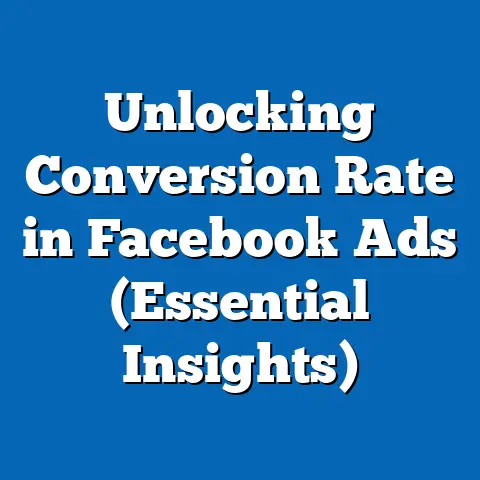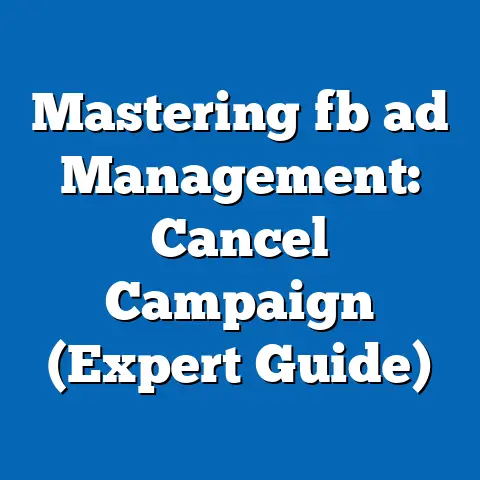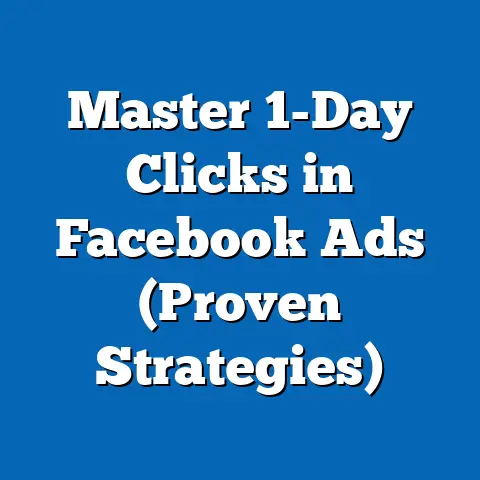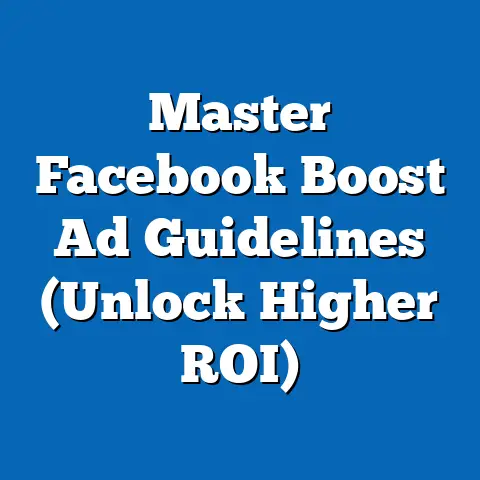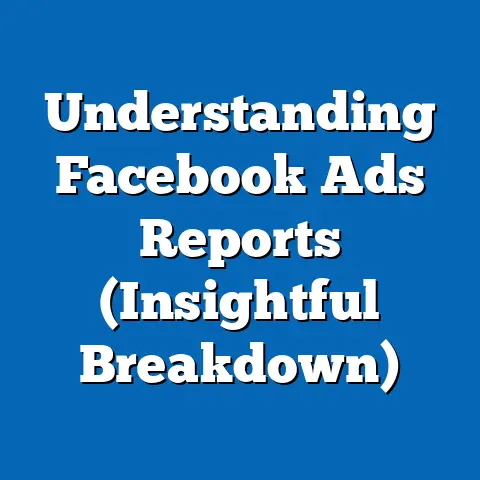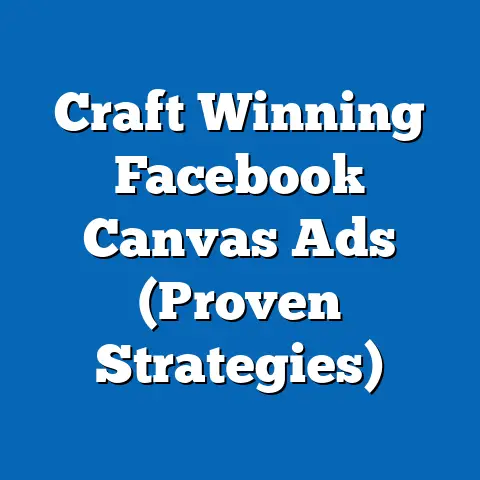Impulsa tu negocio con Facebook Ads (Estrategias Efectivas)
Impulsa tu negocio con Facebook Ads: Estrategias Efectivas para esta Temporada
As the leaves change and the air gets crisper, it’s time to think about how to give your business a seasonal boost. Right now, consumers are shifting their focus, gearing up for holidays, and looking for specific products and services. If you’re not adapting your marketing, you’re missing out on a huge opportunity.
Think of Facebook Ads as your digital storefront window – but instead of just passersby, you’re attracting people who are actually interested in what you’re selling. With the right strategy, you can connect with your ideal customers, increase brand awareness, and drive serious sales. Let’s get started!
Comprender Facebook Ads
Facebook Ads are, simply put, advertisements that you pay to display on Facebook (and Instagram, which is owned by Meta). But don’t let the simplicity fool you – the real power comes from the platform’s robust targeting capabilities and diverse ad formats.
Why are Facebook Ads so relevant for businesses of all sizes? Well, consider this: Facebook has billions of active users worldwide. That’s a massive pool of potential customers, and Facebook gives you the tools to pinpoint exactly who you want to reach. Whether you’re a small local shop or a large e-commerce brand, Facebook Ads can be tailored to your specific needs.
Ad Formats: A Quick Overview
- Image Ads: These are your bread-and-butter ads. A single, compelling image paired with concise copy can be incredibly effective. I’ve found that high-quality visuals always grab attention, especially when they align with current trends.
- Video Ads: Video is king! People love watching videos, and these ads can tell a story, demonstrate a product, or simply entertain. Short, engaging videos tend to perform best.
- Carousel Ads: These allow you to showcase multiple products or features in a single ad. It’s like a mini-catalog right in the newsfeed.
- Collection Ads: Designed for mobile shopping, these ads combine a main video or image with related products below. They’re great for driving direct sales.
- Instant Experience Ads: Formerly known as Canvas Ads, these are full-screen experiences that load instantly on mobile devices. They’re highly engaging and perfect for telling a more in-depth brand story.
Each format has its own strengths, but the key is to choose the one that best suits your objective and target audience. For example, if you’re launching a new product line, a carousel ad might be ideal. If you want to build brand awareness, a captivating video could be the way to go.
Targeting Options: The Secret Sauce
The real magic of Facebook Ads lies in its targeting options. You can target people based on:
- Demographics: Age, gender, location, education, job title, etc.
- Interests: Hobbies, activities, pages they like, etc.
- Behaviors: Past purchases, online activities, device usage, etc.
- Custom Audiences: Upload your own customer list (email addresses, phone numbers) to target existing customers or create lookalike audiences.
- Lookalike Audiences: Find new people who are similar to your best customers. This is a game-changer for scaling your campaigns.
During peak shopping seasons, these targeting options become even more powerful. For example, you could target people who are interested in “holiday gifts” or “seasonal decor.” You can also use retargeting to reach people who visited your website but didn’t make a purchase.
Takeaway: Facebook Ads offer a powerful way to reach your ideal audience with diverse ad formats and precise targeting. Understanding these fundamentals is the first step to creating effective campaigns.
Definiendo tus Objetivos
Before you even think about creating an ad, you need to define your objectives. What do you want to achieve with your Facebook Ads campaign? Are you looking to increase brand awareness, generate leads, drive sales, or something else?
Setting clear objectives is crucial because it will influence every aspect of your campaign, from your ad creative to your targeting strategy to your budget allocation. Without a clear goal, you’re just throwing money at the wall and hoping something sticks.
Common Objectives:
- Brand Awareness: Increase recognition of your brand among your target audience. This is great for new businesses or when launching a new product.
- Reach: Show your ad to as many people as possible within your target audience. This is useful for broad campaigns and generating initial interest.
- Traffic: Drive people to your website or landing page. This is ideal for getting people to learn more about your products or services.
- Engagement: Increase likes, comments, shares, and other interactions with your ad. This is useful for building a community and fostering brand loyalty.
- Lead Generation: Collect contact information from potential customers. This is great for building an email list or following up with leads directly.
- Conversions: Drive specific actions on your website, such as purchases, sign-ups, or form submissions. This is the ultimate goal for many businesses.
- Sales: Directly promote products and drive online or offline sales. This is perfect for e-commerce businesses and retailers.
Aligning Objectives with Seasonal Opportunities
Seasonal trends can significantly influence your objectives. For example:
- Retailers during the holiday season: The primary objective is usually driving sales. You might focus on conversion ads that promote specific products or offer holiday discounts.
- Service-based businesses in the summer: The objective might be lead generation. You could run ads that offer free consultations or special summer packages.
- Restaurants during Valentine’s Day: The objective could be driving reservations. You might run ads that showcase your special Valentine’s Day menu and offer a discount for booking in advance.
Example:
Let’s say you own a small bakery that specializes in seasonal treats. During the autumn season, your objective might be to increase sales of your pumpkin spice lattes and apple pies. You could run Facebook Ads that target people who are interested in “fall flavors” or “baking” and offer a discount on your seasonal treats.
Takeaway: Define clear objectives that align with seasonal opportunities. This will guide your entire campaign and help you measure success.
Creación de Contenido Atractivo
Now that you have your objectives in place, it’s time to create some compelling ad content. Remember, your ad is competing for attention in a crowded newsfeed, so it needs to stand out.
The Power of Visuals
Visuals are crucial for capturing attention. Use high-quality images or videos that are relevant to your target audience and the seasonal theme. Here are a few tips:
- Use bright, eye-catching colors: Colors can evoke emotions and draw people in.
- Showcase your product in action: Let people see how your product or service can benefit them.
- Use seasonal imagery: Incorporate elements like pumpkins, snowflakes, or flowers to connect with the current season.
- Keep it simple: Don’t overload your visuals with too much information.
Crafting Compelling Messaging
Your ad copy should be concise, engaging, and relevant to your target audience. Highlight the benefits of your product or service and include a clear call to action.
- Use strong headlines: Your headline is the first thing people will see, so make it count.
- Highlight seasonal promotions: Offer discounts, limited-time offers, or special bundles.
- Create a sense of urgency: Use phrases like “limited time only” or “while supplies last.”
- Speak directly to your target audience: Use language that resonates with their interests and needs.
Example:
Let’s go back to the bakery example. Your ad copy might look something like this:
“🍂 Cozy up with our delicious pumpkin spice latte! ☕️ Made with fresh, seasonal ingredients. Get 20% off your first order using code AUTUMN20. Limited time only! Click here to order now!”
A/B Testing: Finding the Perfect Formula
Don’t just guess what will work. Use A/B testing to try out different visuals, headlines, and ad copy to see what performs best. Facebook Ads Manager makes it easy to create multiple versions of your ad and track their performance.
Takeaway: Create compelling ad content that resonates with seasonal themes. Use high-quality visuals, concise messaging, and A/B testing to find the most effective combination.
Segmentación y Audiencia
Reaching the right people is just as important as having great ad content. Facebook’s segmentation options allow you to target your ads to specific audiences based on their demographics, interests, and behaviors.
Demographic Targeting
This is the most basic form of targeting. You can target people based on:
- Age
- Gender
- Location
- Education
- Job Title
- Relationship Status
Interest-Based Targeting
This allows you to target people based on their interests and hobbies. You can target people who are interested in:
- Specific Products
- Hobbies
- Activities
- Pages They Like
Behavioral Targeting
This allows you to target people based on their past purchases, online activities, and device usage. You can target people who:
- Have Made a Purchase Online
- Use a Specific Device
- Travel Frequently
Custom Audiences
This allows you to upload your own customer list (email addresses, phone numbers) to target existing customers or create lookalike audiences.
Lookalike Audiences
This allows you to find new people who are similar to your best customers. This is a game-changer for scaling your campaigns.
Tailoring Audience Segments for Seasonal Campaigns
During seasonal campaigns, it’s important to tailor your audience segments to the specific trends and interests of the season. For example:
- Retargeting previous customers: Reach out to people who have purchased from you in the past and offer them a special discount on seasonal products.
- Reaching new prospects: Target people who are interested in seasonal activities or products. For example, you could target people who are interested in “holiday baking” or “fall fashion.”
Example:
Let’s say you own a clothing store. During the winter season, you might target people who are interested in “winter fashion” or “holiday parties.” You could also create a lookalike audience based on your existing customers who have purchased winter clothing in the past.
Takeaway: Tailor your audience segments to seasonal trends and interests. Use retargeting and lookalike audiences to expand your reach and find new customers.
Presupuesto y Ofertas
Setting an appropriate budget and choosing the right bidding strategy are crucial for maximizing your ROI. You don’t want to overspend, but you also don’t want to underspend and miss out on potential sales.
Setting a Budget
The right budget depends on several factors, including:
- Your Objectives: What do you want to achieve with your campaign?
- Your Target Audience: How large is your target audience?
- Your Competition: How much are your competitors spending?
- Your Expected ROI: How much revenue do you expect to generate from your campaign?
As a general rule, it’s better to start with a smaller budget and gradually increase it as you see positive results.
Bidding Strategies
Facebook Ads offers several different bidding strategies:
- Lowest Cost: This is the default bidding strategy. Facebook will try to get you the most results for your budget.
- Cost Cap: This allows you to set a maximum cost per result.
- Target Cost: This allows you to set a target cost per result.
- Bid Cap: This allows you to set a maximum bid for each auction.
- Manual Bidding: This allows you to manually set your bids for each auction.
The best bidding strategy depends on your objectives and your budget. For example, if you’re focused on driving conversions, you might use a cost cap or target cost bidding strategy. If you’re focused on brand awareness, you might use a lowest cost bidding strategy.
Budget Allocation During High-Demand Seasons
During high-demand seasons, it’s important to allocate your budget effectively across different ad sets and campaigns. Here are a few tips:
- Prioritize your best-performing campaigns: Allocate more budget to the campaigns that are generating the most results.
- Test new campaigns: Allocate a small portion of your budget to test new campaigns and targeting options.
- Monitor your results closely: Keep a close eye on your campaign performance and make adjustments as needed.
Example:
Let’s say you have two Facebook Ads campaigns running: one targeting people who are interested in “holiday gifts” and another targeting people who are interested in “winter fashion.” If the “holiday gifts” campaign is performing better, you might allocate more budget to that campaign.
Takeaway: Set an appropriate budget and choose the right bidding strategy. Allocate your budget effectively across different ad sets and campaigns during high-demand seasons.
Medición y Ajustes
The final step is to track your results and make data-driven adjustments to your campaigns. Facebook Ads Manager provides a wealth of data that you can use to evaluate the success of your campaigns.
Key Performance Indicators (KPIs) to Monitor
- Click-Through Rate (CTR): The percentage of people who click on your ad after seeing it.
- Conversion Rate: The percentage of people who take a desired action (e.g., make a purchase, sign up for a newsletter) after clicking on your ad.
- Cost Per Acquisition (CPA): The cost of acquiring a new customer.
- Return on Ad Spend (ROAS): The amount of revenue you generate for every dollar you spend on advertising.
Making Data-Driven Adjustments
During busy shopping seasons, it’s crucial to make data-driven adjustments to your campaigns in real-time. Here are a few things you can do:
- Adjust your budget: If your campaigns are performing well, you might increase your budget to reach more people. If your campaigns are not performing well, you might decrease your budget or pause them altogether.
- Adjust your targeting: If you’re not reaching the right people, you might adjust your targeting options.
- Adjust your ad content: If your ad content is not resonating with your target audience, you might try different visuals or messaging.
Example:
Let’s say you’re running a Facebook Ads campaign to promote your holiday sale. You notice that your click-through rate is low, but your conversion rate is high. This suggests that your ad is not attracting enough attention, but the people who do click on it are likely to make a purchase. You might try using a more eye-catching visual or a more compelling headline.
Takeaway: Track your results and make data-driven adjustments to your campaigns in real-time. This is essential for maximizing your ROI during busy shopping seasons.
Conclusion
Facebook Ads are a powerful tool for driving business growth, especially during seasonal trends. By understanding the fundamentals of Facebook Ads, defining your objectives, creating compelling ad content, targeting the right audience, setting an appropriate budget, and tracking your results, you can create effective campaigns that drive serious sales.
Don’t be afraid to experiment and try new things. The key to success with Facebook Ads is to continuously test and optimize your campaigns based on data. By embracing these strategies, you can not only boost your sales during the current season but also create a sustainable approach for future campaigns. So, get out there and start experimenting! I’m confident you’ll see some amazing results. Good luck!

